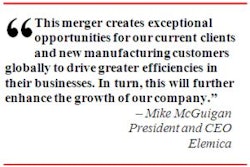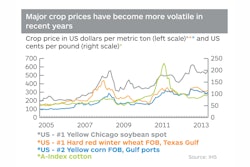Supplier relationship management (SRM) is an approach to managing an enterprise’s interactions with the suppliers of goods and services it uses. SRM programs streamline the processes between an enterprise and its suppliers to improve efficiencies and effectiveness. To start an SRM program, you must first understand the differences between your suppliers, i.e. supplier segmentation. Here we look at segmenting suppliers to focus efforts for a business-to-business (B2B) program as part of a larger SRM initiative.
There is a lot of talk in the media about collaborative supply chain networks, but to get the most out of these networks, businesses first need to understand which suppliers it makes sense to collaborate with. Companies looking to take advantage of these networks and collaborative processes must start with a supplier segmentation exercise. In this case, the first priority would be determining what your technical capabilities are (information technology, forecasting, etc.), which suppliers have the largest impact on your program (return on investment), what procurement execution processes are available (standard order to pay, vendor-managed inventory) and what approach to take to generate the positive momentum necessary to help drive the change management effort. This exercise is critical to building an effective supply chain operating network.
An internal technical capabilities assessment lets you know what information technology (IT) initiatives and business processes you can initiate.
- Is change management in place? Do you have executive sponsorship? Do you have stakeholder support? Do you have resources to manage a program? Can you build a team to coordinate a supplier management program with inputs from purchasing, transportation, operations, plants, etc.?
- What are your IT capabilities? Is B2B an option?
- Is vendor-management inventory (VMI) an option?How accurate is your forecasting?Is your forecast tied in real time to point-of-sale information?
- Do you have a network of additional third parties to provide transportation and storage information for overseas supply?
Supplier segmentation is the next step in aligning your capabilities and SRM strategy with these new supply chain operating networks to maximize value. Various attributes need to be considered, such as:
- Indirect vs. direct materials.
- Strategic nature of the supplier.
- Single source vs. multi-source products.
- Materials co-designed with the supplier.
- Competitive advantage of using supplier.
- Logistics risk and freight management.
- Technical sophistication of the supplier.
- Order volume.
- VMI capability.
- Creditworthiness.
- Leverage.
- Corporate culture and social responsibility.
The outcome of this exercise is to understand that not all suppliers are equal when it comes to building an effective supplier network. For example, direct material procurement is very different from the indirect procurement process in that direct material products are often of a higher value, more strategic in nature and treated differently from an enterprise resource planning (ERP) system perspective.
The purchasing processes you want to employ also impact how you segment suppliers. Let’s say you are building a supplier management program and trying to determine with whom you should employ standard order management vs. a more advanced system like vendor/supplier-managed inventory. Looking specifically at direct material procurement a level deeper, you can analyze attributes of these suppliers to further segment them, such as:
- Supplier technology: Can they do e-commerce? Can they do planning based on your forecast and inventory inputs?
- Logistics risk: Is the material sourced locally or overseas? Who manages the transportation?
- Strategic impact: Is the material single-sourced? Are comparable alternatives readily available? Is the material a co-designed proprietary material? Does the material give you a competitive advantage?
- Regulatory impact: What about regional value-added tax (VAT) regulations, customs clearance rules and conflict resources?
- Inventory impact: What about the delivery/consumption volume, forecast accuracy, consumption nature (batch vs. steady), price and service levels?
Effective supplier relationship management starts with understanding your internal capabilities, your supply base and the collaborative technologies that are available to drive down working capital while increasing service levels. A holistic alignment with suppliers is needed across the corporation to ensure a seamless flow of high-quality goods to the right place at the right time. By automating with the right suppliers, your business can reduce administrative burden and errors, gain visibility into what is happening, and drive down costs.








